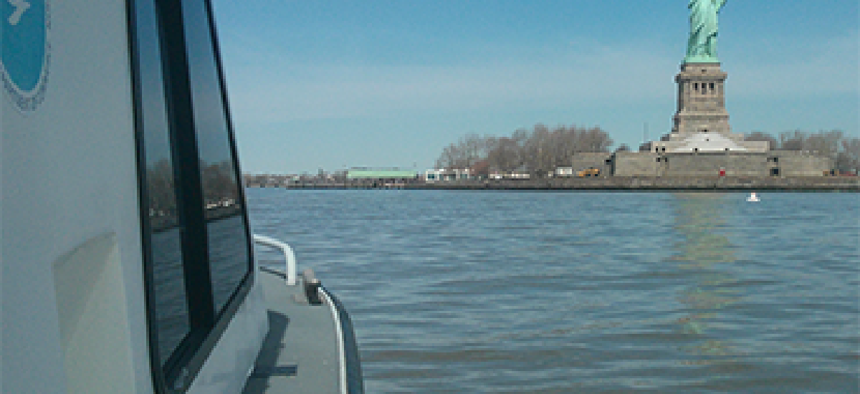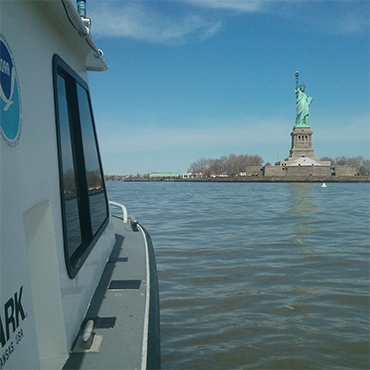NOAA undertakes post-Sandy mapping

The science agency is attempting to assess the effects of the storm on the coastal areas and shallow waters that were in its path.

A NOAA vessel surveys the shallow waters around Liberty Island in New York as part of a project to assess the aftermath of Hurricane Sandy. (NOAA photo)
A year after Hurricane Sandy tore up the eastern seaboard from South Carolina to Maine, heaving aside protective coastal sand dunes, bursting barrier islands, carving new channels and substantially altering the geography of the sea floor, the National Oceanic and Atmospheric Administration NOAA has been given $47.5 million to make sense of the topological aftermath.
The funding will allow more ships, aircraft and sensors to peer into the shallow coastal waters of the United States, revealing and recording seafloor and coastline details that are vitally important to shipping, the fishing industry and towns rebuilding along the coast.
NOAA will head the mapping project, with the U.S. Geological Survey and the Army Corps of Engineers taking part. The effort could generate chunks of data measuring in the terabytes in the coming 18 to 24 months.
According to NOAA, teams have already surveyed the waters around Liberty Island and Ellis Island in New York, measuring depths and looking for storm debris that could harm ships. A NOAA ship also began a survey of Delaware Bay in June. The agency plans to contract with commercial firms for more hydrographic survey projects, bathymetric elevation data and imagery in the region.
In the coming months, the Army Corps of Engineers' Joint Airborne LIDAR Bathymetry Technical Center of Expertise will cover projects in Massachusetts, Virginia and New Jersey. The two will coordinate operations, research and development in airborne LIDAR [Laser Interferometry Detection and Ranging] bathymetry for the Corps, NOAA and the Navy.
The overall emphasis of the mapping project, according to a statement by NOAA Rear Adm. Gerd Glang, director of NOAA's Office of Coast Survey, is a "whole ocean approach" to get as much information as possible all at once for a pool of agencies, then use the data for many purposes.
What had been a relatively small data-processing operation a few years ago has grown into a massive data collection and storage operation as increasingly higher resolution scanners, LIDAR and other sensing technologies have advanced.
Much of the data collected, according to NOAA, will be stored at NOAA's National Geophysical Data Center's (NGDC) facilities, headquartered in Boulder, Col. The center, one of three National Environmental Data Centers operated by NOAA's Satellite and Information Service, will work to make it available to local, state and federal agencies, academia and the general public.
"Seven years ago our archive was three quarters of a terabyte. Now we ingest 25 terabytes per quarter," Susan McLean, chief of the NGDC marine geology and geophysics division in Boulder, Colo., told FCW. By way of comparison, the Library of Congress reportedly has collected 235 terabytes of data and adds about five terabytes a month.
number of ways

